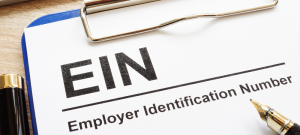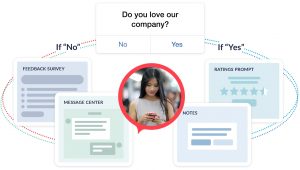When a lead becomes marketing or sales qualified, it’s an exciting time for both teams. You put in your hard work, and it’s paid off! But getting to that celebratory point can be difficult if your departments are not aligned when it comes to your lifecycle stages and the strategy behind them.
Here are some common mistakes we see businesses make when it comes to lifecycle stages.
Not Understanding What Lifecycle Means
Newbies to marketing or HubSpot – or both – may scratch their heads when they hear the phrase “lifecycle stages.” If you’re unfamiliar with the term from the get-go, you’ll likely have more trouble as you dig deeper.
HubSpot lifecycle stages refer to a set of stages (phases, points, etc.) a potential customer moves through as they work through your marketing and sales processes. Think of your own experiences when making a big purchase. You started at one point with limited information before becoming educated enough to make a purchasing decision.
Not Knowing the Default Stages
Another critical component in avoiding mistakes with lifecycle stages is fully understanding the different default stages available in HubSpot. HubSpot lifecycle stages are fixed and will always appear as:
- Subscriber – Someone who’s subscribed to your blog via a form submission. All manual imports are default set to subscribers, so you’ll need to update them as needed.
- Lead – Any contact who converts on a form other than a blog subscription.
- Marketing Qualified Lead (MQL) – MQLs are defined as leads that are likely to become customers, but not quite ready to hand to sales.
- Sales Qualified Lead (SQL) – An SQL is ready for direct attention from sales.
- Opportunity – A lead who has talked to sales and can be considered a potential future deal.
- Customer – A lead that has closed by purchasing from your business.
- Evangelist – Advocates, promoters, or fans of your company.
- Other – A category you can use for anyone who doesn’t fit into the different stages, like employees, partners, vendors, or job applicants.
Lifecycle stages are automatically created based on your contact’s actions, like when someone converts on a landing page form or someone signs up for your blog newsletter. For other stages, like opportunity, you can create a workflow that moves them from opportunity to customers after a deal moves to “closed won.”
Not Updating Lifecycle Stage Properties
If you need to update the lifecycle stages of your contacts to reflect better where they are within your marketing and sales processes, there are several ways to go about it. For example, you can:
- Manually update the property for a contact – Locate your contact’s record, navigate to their lifecycle stage, then change as needed.
- Import to update the stages of a set of contacts
- Set a property value action in a workflow (note: only available to Professional or Enterprise accounts)
- Use a hidden form field (note: only available to Professional or Enterprise accounts)
Not Utilizing Custom Lifecycle Stage Properties
While HubSpot’s default stages are not editable, you can create custom lifecycle stage properties to accommodate your company’s needs. This can be a valuable tool when you feel none of the combinations of default stages will work for your organization. By doing this, you can essentially add stages if your process demands. To create a custom lifecycle stage property:
- Navigate to Contacts > Contacts
- Click Actions, then Edit properties
- Be sure you’re under the Contact properties, then click Create a Property
- Enter label – i.e., Custom Lifecycle Stage Property
- Click the Field type dropdown menu, select Dropdown select or Radio select to give users the option to identify one single option per contact record
- Click Add an Option
- Label it and add properties
- Turn Display Externally on if you want to use this property on forms
- Choose the Group you want this property to appear
- Add a description if needed
- Create!
Not Fully Defining What MQLs and SQLs Are
An MQL is someone who’s interacted with your marketing material enough to be sales-ready but still not ready to directly speak to sales. An SQL is a contact who has taken enough qualifying actions to speak directly to sales.While these definitions are pretty consistent across the board, the characteristics that qualify each vary depending on who you ask within any given company. For instance, one marketing team member may think a lead becomes an MQL after downloading a single premium content piece while another believes they need to take five or so actions to reach that point.
Determining the actions and attributes a lead needs to take to become an MQL or SQL is critical. Without knowing for sure, you can’t set up the logic required to update these users’ lifecycle stages automatically. To determine each, consider:
Lead Behavior – What did this person do or engage with while on your website? How often did it occur? The behavior someone has in relation to your site and content is key to defining MQLs and SQLs. Essential characteristics to focus on when it comes to behavior include:
- How many times they’ve visited your site
- What pages they’ve visited
- Conversion counts on forms
- Referral source (i.e., where they came from)
- Email CTRs and OPRs
Lead Demographics – A user may have done enough to become an MQL is your teams’ eyes, but are they your target audience? Should you pass them to sales if they don’t fit your ideal demographic? This information is just as important as lead behavior because it helps determine who you want your customers to be. Consider information like:
- Industry
- Job role
- Job behavior
- Company
- Company size
Once you’ve nailed down your organization’s specific definitions of an MQL and SQL, create a service-level-agreement (SLA) between marketing and sales. Your SLA will align your team on the meanings of your lifecycle stages with an emphasis on MQL and SQL, your marketing and sales goals, and what needs to be done to achieve those goals.
Not Having or Updating Your Form Strategy
Lifecycle stages are almost meaningless if there isn’t a defined form strategy behind them. If you have a singular form on one page of your site with three questions, you aren’t qualifying your visitors equally. Sure, you may be able to uncover a bunch of new leads, but you aren’t gathering any useful information that can help move those leads to MQL or SQL.
That’s why it’s essential to add the right properties to your forms to make sure you’re collecting the criteria needed to update your lifecycle stages accurately automatically. The best way to go about this is to have a form for every step of the buyer’s journey: awareness, consideration, and decision. Ensure these three primary forms have the right question to qualify leads then place the forms on pertinent webpages.
Wrapping it Up
Setting yourself up for success in HubSpot is essential to a robust inbound marketing strategy – and that begins with your lifecycle stages. Understanding and setting them, so your marketing and sales departments are on the same page is critical to avoiding mistakes. Because, when done correctly, lifecycle stages can give you insights into your efforts and help you turn leads into customers.
Business & Finance Articles on Business 2 Community
(56)
Report Post





